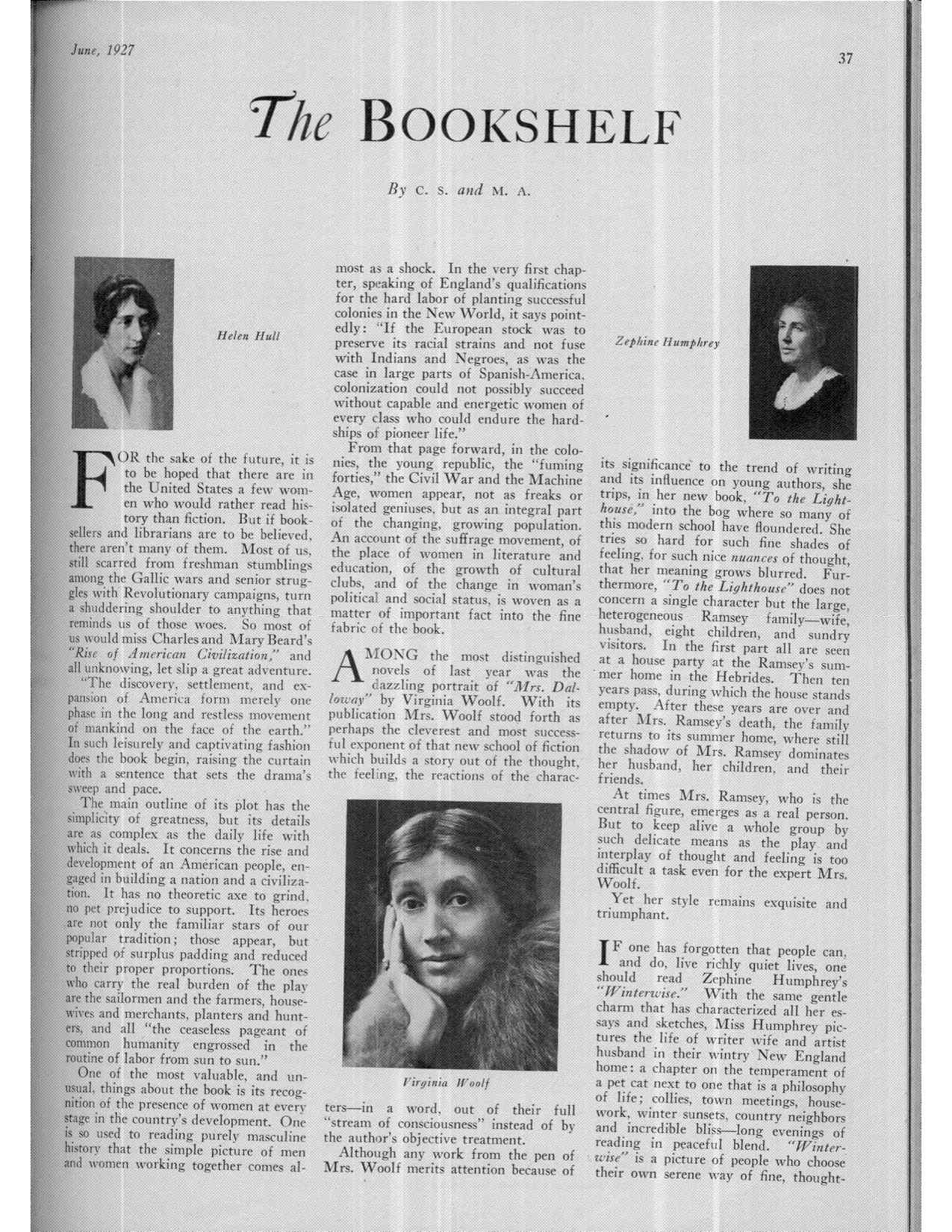
C. S. and M. A. The Woman Citizen. June 1927, p. 37.
AMONG the most distinguished
novels of last year was the
dazzling portrait of “Mrs. Dalloway”
by Virginia Woolf. With its
publication Mrs. Woolf stood forth as
perhaps the cleverest and most successful
exponent of that new school of fiction
which builds a story out of the thought,
the feeling, the reactions of the characters—
[photograph of Virginia Woolf, captioned:]
Virginia Woolf
in a word, out of their full
“stream of consciousness” instead of by
the author’s objective treatment.
Although any work from the pen of
Mrs. Woolf merits attention because of
[new column]
its significance to the trend of writing
and its influence on young authors, she
trips, in her new book, “To the Lighthouse,”
into the bog where so many of
this modern school have floundered. She
tries so hard for such fine shades of
feeling, for such nice nuances of thought,
that her meaning grows blurred. Furthermore,
“To the Lighthouse” does not
concern a single character but the large,
heterogeneous Ramsey [sic] family—wife,
husband, eight children, and sundry
visitors. In the first part all are seen
at a house party at the Ramsey’s summer
home in the Hebrides. Then ten
years pass, during which the house stands
empty. After these years are over and
after Mrs. Ramsey’s death, the family
returns to its summer home, where still
the shadow of Mrs. Ramsey dominates
her husband, her children, and their
friends.
At times Mrs. Ramsey, who is the
central figure, emerges as a real person.
But to keep alive a whole group by
such delicate means as the play and
interplay of thought and feeling is too
difficult a task even for the expert Mrs.
Woolf.
Yet her style remains exquisite and
triumphant.






